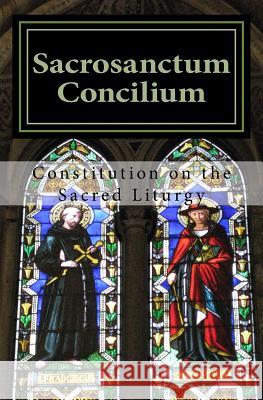Sacrosanctum Concilium: Constitution on the Sacred Liturgy » książka
Sacrosanctum Concilium: Constitution on the Sacred Liturgy
ISBN-13: 9781530163649 / Angielski / Miękka / 2016 / 70 str.
One of the first matters to be addressed by the Second Vatican Council was the question of how to reform the sacred liturgy of the Church. This had been a matter of widespread concern for decades, not only among -progressive- clergy and theologians, but throughout the general rank and file of those entrusted with pastoral duties. This concern was not confined to the rite of the Mass, but extended to sacraments, sacramentals, prayers, music and art. While it was inadmissible to alter any of the ancient doctrines pertaining to the form and efficacy of the sacraments, there was nonetheless a generally perceived need to reform the cultural modes by which the Church's graces are administered.
More concretely, the exclusive use of the Latin language in liturgy posed an obstacle to the active participation by laity. Masses often became occasions for private devotion, so that there was a disconnect between the nominally public liturgy of the Church and the prayer experience of the laity. Even when prayers were translated into the vernacular, they included terms and concepts that were scarcely intelligible to most modern people, so that prayer effectively was little more than rote recitation. There was a need, therefore, to make the Church's treasury of prayer more accessible to the modern mind, without compromising the revealed truths and mysteries to which prayer directs the soul.
As the Church in the twentieth century had expanded well beyond Europe and the Americas, liturgical forms grounded in Latin culture sometimes posed an obstacle to the propagation of the faith. The universality of the Church should preclude confining its message to a Latin European cultural manifestation, but instead it should be permitted to adapt its presentation according to various local cultures. For centuries, missionaries had been given special dispensations in the administering of sacraments in order to accommodate local cultural circumstances. What was now needed was universal flexibility in liturgical presentation, to adapt to an ever more culturally diverse and ethnologically changing Church. Even in the traditional Christian countries, Catholics found that the culture in the liturgy was alien to the culture of their daily lives. The liturgy, therefore, needed to be adapted to man as he is found in this age, not as he was centuries ago.
The key concepts of this liturgical reform program are inculturation and renewal. Inculturation means allowing existing human culture to inform the liturgy, as in fact happened when the ancient Greek and Roman rites were developed. Over time, to protect against abuses, and out of respect for ancient tradition, liturgical rites came to have an increasingly fixed form, to the point of being nearly inalterable. Meanwhile, the rest of human culture changed at an increasingly rapid rate, so that it was practically impossible for most modern Catholics to have the same appreciation of their liturgical heritage as their medieval predecessors. Art and music similarly tended to stagnate into relatively fixed baroque styles. The whole feel of Catholic liturgy was backward-looking on a cultural level, when in fact the purpose of liturgy is to point to the presence of Christ now in this age.











